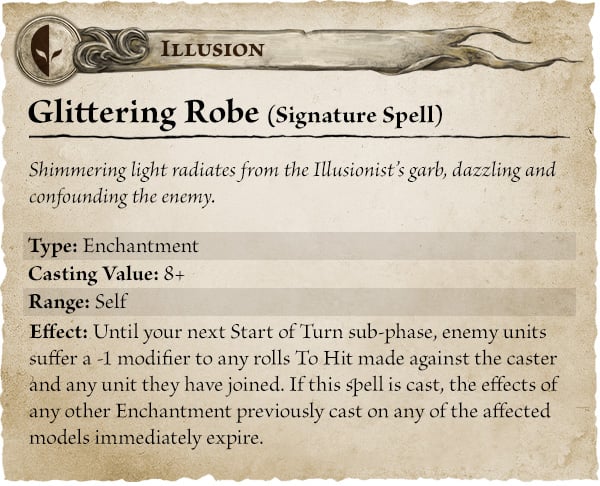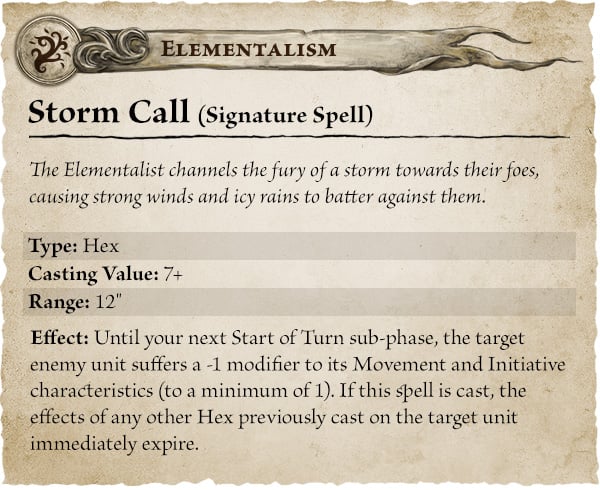What would Warhammer be without magic? Without that ever-present risk of having your proud regiment of Silver Helms toasted by a well directed Fireball, or your Black Orcs grappled by the Dwellers Below?

The four-phase structure of Warhammer: The Old World is perhaps the biggest break with the previous instalment of Warhammer Fantasy Battles – not least because there’s now no set Magic phase. But that doesn’t mean the arcane arts take a back seat; if anything, magic is even more prevalent as it’s cast during every phase of the game.
Wizardry 101
Warhammer: The Old World is set at a time before the Colleges of Magic were established. Imperial Wizards were still very much around and tapping into the eight winds, but the study of magic had yet to be so formalised in human lands.
That’s not to say that there aren’t lores – there are eight in the core rulebook alone, each representing a particular approach to the study of magic: Battle Magic, Dark Magic, Daemonology, Elementalism, High Magic, Illusion, Necromancy, and Waaagh! Magic. Most mages will have access to two or more of these, selecting one Lore at the start of each battle.

Each Lore has seven spells, with one being a signature spell that’s always available to its adherents. Every magic user has a level running from one to four – the higher the level, the more puissant the wizard, and the more spells they know at the start of the game.

There are six types of spell: Enchantment and Hex (Strategy phase), Conveyance (Movement phase), Magic Missile and Magical Vortex (Shooting phase), and Assailment (Combat phase). These are cast in the appropriate phase, so units can end up Enchanted or Hexed from the outset of your turn, magically moved when it’s time to charge, and blasted with arcane power when the rest of the shooting happens.
Each conjuration has a casting value appropriate to how complex it is, and spells are cast on 2d6, adding the skill level of the caster. It’s a quicker system than the previously used Winds of Magic cards or pools of dice – leaving the tactical decisions of what to cast and when.

Magic is still very much a duel between opposing wizards. It’s still perfectly possible to Miscast should you roll a double 1, or to achieve a Perfect Invocation on a double 6.
What’s more, every spellcaster can attempt to dispel their opponents’ conjurations – provided they’re within 18” as first and second-level casters, or 24” at levels three and four. Roll 2D6 and add your level to the roll – if you beat the casting roll, the target spell is cancelled. A double 6 counts as an Unbinding, dispelling no matter the casting roll, but should you roll a double 1, you’ve been Outclassed in the Art – and you must roll on the Miscast Table…

What’s more, both Casting and Dispel rolls can be further modified by the wealth of magic items available to Wizards, and by a number of special rules. It’s a real battle of arcane wits out there.
If a player finds themselves unable to attempt a Wizardly dispel, they may make one Fated Dispel per turn – an unmodified 2D6 attempt. To offset this, certain units (notably Dwarfs) have an innate resistance to magic, making it harder for enemy wizards to cast spells upon them successfully. Yet even Dwarfs have some recourse to the arcane – Runesmiths are perfectly capable of making dispel attempts.
Damsels Causing Distress

Let’s take a closer look at one of the first spellslingers to be released next year – the Bretonnian Handmaiden of the Lady. From the lowliest first-level Damsel to the mightiest Prophetess, these formidable priestesses of the Lady of the Lake may pick from three spell lores: naturalistic Elementalism, tricksy Illusion, or Battle Magic for when a direct approach is best.

As you can see, she comes with plenty of options – take her as a lowly first-level conjurer or a mighty fourth-level arch-mage! She can also be mounted on a Warhorse, a Bretonnian Warhorse, a Royal Pegasus, or a Unicorn.

She’s at her best when she’s joined by a unit, as her aura confers Magical Attacks and Magic Resistance (-2) to the brave men and women she leads, and her Shield of the Lady ability allows her to seek sanctuary in the back rank where she can cast her spells untroubled by the aggression of the foe.
As a Battle Magic user, her signature spell is Hammerhand, an Assailment cast in combat to add considerable threat to the charge of the noble knights who flank her. Elementalists can Storm Call an enemy unit, slowing them and dulling their wits to soften them up for a charge, while Illusionists may cast a Glittering Robe on their allies, making them harder to hit in combat. No Knights of the Realm should leave the keep without a Damsel in tow.



In summary, though the Magic system may be simplified from editions past, it retains its tactical depth – your spells can still change the course of the game, but they’re more blended into the action, leading to a smoother experience. What’s more, because the ranges have been cut short both for spells and dispels, canny generals have to put a lot more thought into where they station their Wizards and how they’re used, both in casting their own spells and countering enemy magic.
Next week we’ll be investigating the Grail Knights – living saints and exemplars of the Bretonnian way of life – and seeing how they interact with the Universal Special Rules.


































